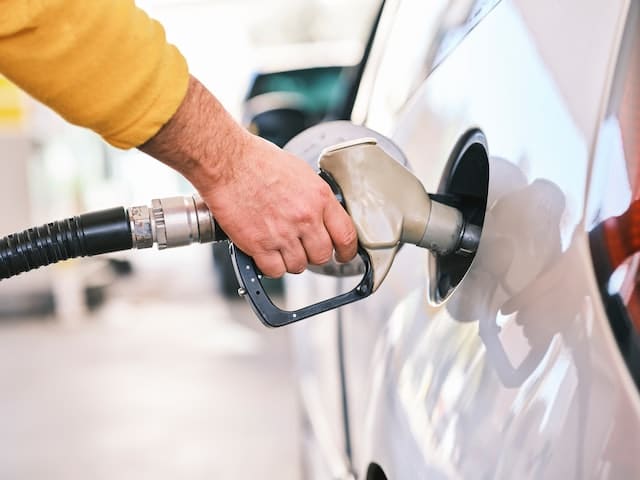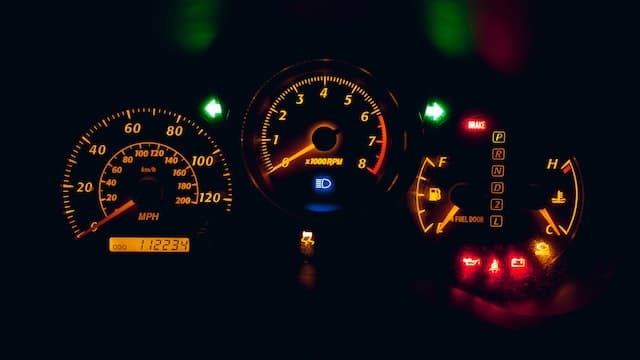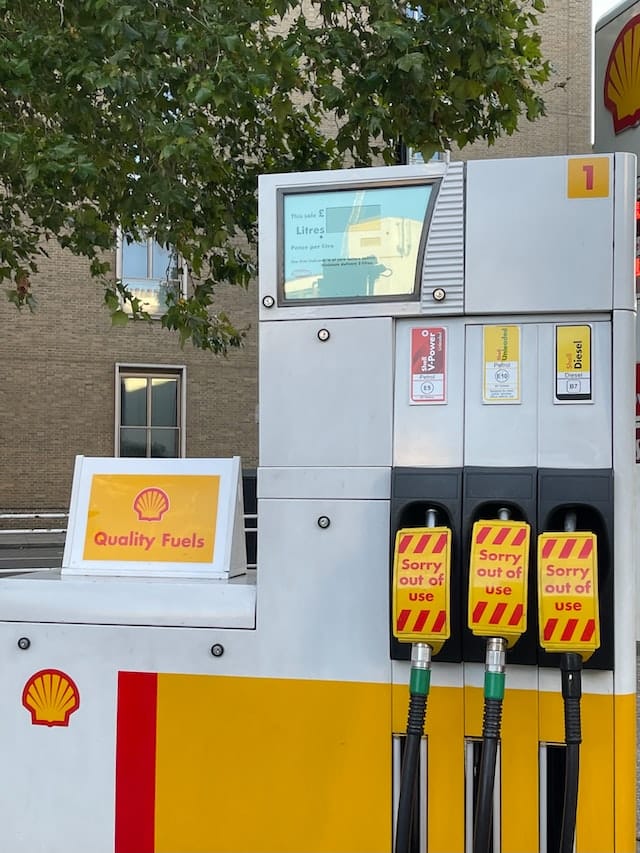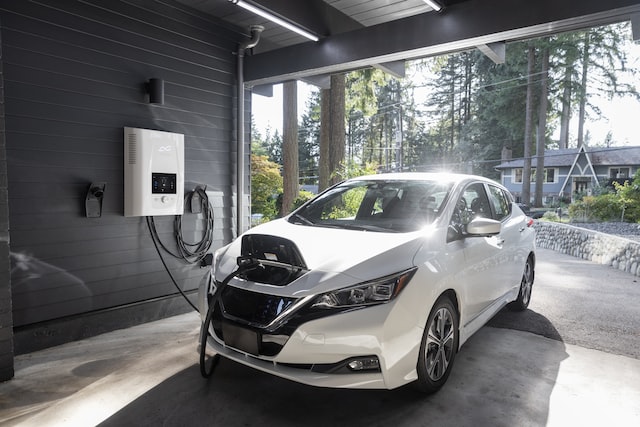When considering the purchase of a new car or trying to understand the capabilities of your current vehicle, the term “range” might come up frequently. Range refers to the distance a vehicle can travel on a single tank of fuel or a full battery charge. Understanding the concept of range is important for both car owners and potential buyers, as it can significantly impact the overall driving experience, cost of ownership, and suitability for specific needs.

What Does Range Mean In A Car: Key Takeaways
Distance
Range refers to the distance a vehicle can travel on a single tank of fuel or a full battery charge, depending on the type of vehicle (ICE, EV, or hybrid).
Elements influencing range
Factors affecting range include fuel tank capacity, battery capacity, engine or motor efficiency, vehicle weight, aerodynamics, tires and rolling resistance, driving conditions and habits, and climate and weather.
Range anxiety
Range anxiety is the fear of running out of fuel or battery power before reaching a refueling or charging station, which can impact the decision between ICE and EV vehicles.
Calculating range
Calculating range for ICE vehicles involves using miles per gallon (MPG) or liters per 100 kilometers (L/100km), while for EVs, it involves kilowatt-hours per 100 miles (kWh/100mi) or kilometers (kWh/100km).
Maximizing range
To maximize range, maintain optimal tire pressure, limit excessive weight, adopt efficient driving habits, and perform regular vehicle maintenance.
Different types of range

Understanding range is important when choosing a vehicle and making the most of its capabilities, as well as anticipating advancements in automotive technology that will continue to impact range in the future. Range can vary depending on the type of vehicle:
Fuel range for internal combustion engine (ICE) vehicles
This refers to the distance an ICE vehicle can travel on a full tank of gasoline or diesel fuel.
Electric vehicle (EV) range
This refers to the distance an EV can travel on a fully charged battery.
Hybrid vehicle range
This refers to the combined distance a hybrid vehicle can travel using both its internal combustion engine and electric motor, utilizing gasoline and battery power.
Factors affecting range

Several factors can impact a car’s range:
Fuel tank capacity or battery capacity
A larger fuel tank or battery can store more energy, allowing for a longer range.
Engine or motor efficiency
More efficient engines or electric motors can convert energy into motion more effectively, increasing range.
Vehicle weight
Heavier vehicles require more energy to move, resulting in reduced range.
Aerodynamics
Cars with better aerodynamics encounter less air resistance, improving range.
Tires and rolling resistance
Low rolling resistance tires help conserve energy, thus increasing range.
Driving conditions and habits
Aggressive driving, rapid acceleration, and high speeds can negatively affect range.
Climate and weather
Extreme temperatures and strong winds can also impact a vehicle’s range.
How to calculate range

To estimate the range of a vehicle:
Fuel consumption rate for ICE vehicles
Miles per gallon (MPG) or liters per 100 kilometers (L/100km) are commonly used measurements.
Example calculation: If a car has a fuel tank capacity of 15 gallons and an average fuel efficiency of 30 MPG, the estimated range is 15 gallons x 30 MPG = 450 miles.
Energy consumption rate for EVs:
Kilowatt-hours per 100 miles (kWh/100mi) or kilometers (kWh/100km) are typically used.
Example calculation: If an electric car has a 60 kWh battery and an energy consumption rate of 4 kWh/100mi, the estimated range is (60 kWh / 4 kWh/100mi) x 100 miles = 1500 miles.
How accurate is the fuel or electric range on cars?

While the fuel or electric range displayed on a car can give you a general idea of how far you can travel on the remaining fuel or charge, it’s essential to treat it as an estimate rather than an exact value. To avoid running out of fuel or charge, plan your trips carefully and make a habit of refueling or recharging when the gauge reaches a quarter of a tank or when the range estimate indicates that a refueling or recharging station is within reach.
Instrument accuracy and inherent variability
The accuracy of the fuel gauge or battery level indicator can vary between vehicles and can be influenced by factors such as the shape of the fuel tank, the position of the fuel level sensor, or the battery management system’s calibration. Inaccurate readings can result in an inaccurate range estimate.
Finally, range calculations are generally based on averages and can’t account for all potential variables. As a result, there will always be some degree of inherent variability in the accuracy of the range estimate.
Range anxiety and its impact on vehicle choice

Range anxiety is the fear of running out of fuel or battery power before reaching a refueling or charging station. This concern can heavily influence the decision between ICE and EV vehicles. To overcome range anxiety, improvements in charging infrastructure, battery technology, and range-extending technologies (e.g., hybrid systems, range extenders) are being developed.
How to maximize range

To get the most out of your vehicle’s range:
Maintain optimal tire pressure to reduce rolling resistance
To maintain optimal tire pressure and reduce rolling resistance, follow these steps:
Check the recommended tire pressure
Look for the manufacturer’s recommended tire pressure on the sticker located on the driver’s side door jamb or in the vehicle owner’s manual. This recommendation is given in pounds per square inch (PSI) or kilopascals (kPa).
Purchase a reliable tire pressure gauge
Invest in a good-quality tire pressure gauge, which can be found at auto parts stores or online. Digital gauges tend to be more accurate and easier to read than analog versions.
Check tire pressure when the tires are cold
Tire pressure should be checked when the tires are cold, preferably after the vehicle has been parked for a few hours or has only been driven a short distance. Warm tires can result in inaccurate pressure readings.
Compare the reading with the recommended pressure
If the tire pressure is lower than the manufacturer’s recommended level, inflate the tire until it reaches the optimal pressure. If the pressure is too high, release air from the tire until it matches the recommended level.
Maintain a regular tire pressure check schedule
Check your tire pressure at least once a month and before long trips. This will help ensure optimal tire pressure, improve fuel efficiency, and reduce rolling resistance.
Limit excessive weight by removing unnecessary items from the car

To limit excessive weight and improve your vehicle’s efficiency, follow these steps to remove unnecessary items from the car:
Clean out the trunk
Regularly check the trunk for items that have accumulated over time, such as sports equipment, tools, or unused emergency supplies. Remove any items that are not essential for your daily driving needs or current trip.
Remove unused roof racks or carriers
If you have a roof rack or carrier installed but are not using it, remove it from your vehicle. These attachments can add weight and create additional drag, reducing fuel efficiency.
Organize the interior
Go through the glove box, center console, door pockets, and under-seat storage areas. Remove any unnecessary items, such as old receipts, expired registration papers, or extra charging cables. Reassess add-on accessories. Some aftermarket accessories, like large subwoofers or decorative items, can add significant weight to your vehicle. Evaluate if these accessories are essential and remove them if they are not necessary.
Keeping up with regular vehicle maintenance
Regular maintenance, such as oil changes and tire rotations, can help identify worn or damaged parts that may be adding unnecessary weight to your vehicle. Replace these parts as needed to maintain optimal performance and weight.
Evaluate passengers and cargo
When planning a trip, consider the number of passengers and the amount of cargo you need to transport. Only carry what is necessary to avoid excessive weight.
Adopt efficient driving habits
Adopting efficient driving habits can significantly improve your vehicle’s fuel efficiency, reduce wear and tear, and lower emissions. Here are some tips for efficient driving, including gradual acceleration and maintaining a steady speed.
Gradual acceleration
When starting from a stop, gently press the accelerator pedal, allowing the vehicle to gain speed smoothly. Avoid rapid acceleration, as it can consume more fuel and increase emissions.
Maintain a steady speed
Aim to keep a constant speed while driving, as frequent speed changes can lower fuel efficiency. Cruise control can be particularly helpful on highways, as it helps maintain a steady speed with minimal intervention.
Anticipate traffic
Pay attention to the flow of traffic ahead and adjust your speed accordingly to avoid unnecessary braking and acceleration. This can help save fuel and reduce wear on your brakes.
Coast to decelerate
When possible, take your foot off the accelerator and let the vehicle coast to decelerate instead of using the brakes. This can save fuel and reduce wear on the braking system.
Observe speed limits
Driving at or below the posted speed limits can help improve fuel efficiency, as higher speeds generally require more fuel to maintain.
Minimize idling
Turn off the engine if you expect to be stopped for more than a minute or two, such as at a railroad crossing or in a long drive-through line. Idling consumes fuel and produces emissions without any benefit.
Use the right gear
For manual transmission vehicles, shift gears at the appropriate engine RPM to maintain optimal engine efficiency. For automatic transmission vehicles, avoid using the sport or performance mode, which can prioritize performance over fuel efficiency.
Plan your trips
Combine errands and plan your routes to minimize driving distances and avoid traffic congestion. This can help reduce fuel consumption and save time.
Understanding the concept of range in a car is crucial when choosing a vehicle or making the most of your current one. When purchasing a new car, be sure to consider how the range will fit your needs and lifestyle. As advancements in automotive technology continue, the range will undoubtedly play an increasingly significant role.
FAQ: Understanding Vehicle Range and Factors Affecting It

Q: What does ‘range’ mean in the context of vehicles?
A: Range refers to the maximum distance a vehicle can travel on a single tank of fuel or a full battery charge without needing to refuel or recharge.
Q: How is range calculated for gas-powered vehicles?
A: Range is calculated by multiplying the vehicle’s fuel tank capacity by its estimated fuel efficiency (miles per gallon or kilometers per liter).
Q: How is range calculated for electric vehicles (EVs)?
A: Range for electric vehicles is calculated by multiplying the battery capacity (measured in kilowatt-hours) by the vehicle’s energy consumption rate (miles or kilometers per kilowatt-hour).
Q: What factors can affect a vehicle’s range?
A: Factors affecting range can include driving conditions (e.g., traffic, terrain), weather, driving style (e.g., aggressive acceleration, high speeds), and additional energy consumption from accessories (e.g., air conditioning, heated seats).
Q: How can I maximize the range of my gas-powered vehicle?
A: To maximize range, maintain proper tire pressure, reduce weight by removing unnecessary items from the car, avoid aggressive driving, use cruise control on highways, and perform regular maintenance.
Q: How can I maximize the range of my electric vehicle?
A: To maximize EV range, use regenerative braking, preheat or precool the cabin while still plugged in, minimize use of energy-consuming features, and plan your route to include charging stations if necessary.
Q: Why do electric vehicles have a shorter range in cold weather?
A: Cold weather can affect battery performance, leading to reduced energy output and shorter range. Additionally, using heating systems in cold weather can further reduce an EV’s range.
Q: Can range anxiety be an issue for electric vehicle owners?
A: Range anxiety, or the fear of running out of battery power before reaching a charging station, can be a concern for some EV owners. However, planning trips with charging stops and using tools like in-car navigation systems or apps that show charging station locations can help alleviate range anxiety.
Q: How do hybrid vehicles’ ranges compare to gas-powered and electric vehicles?
A: Hybrid vehicles typically have a longer range than pure electric vehicles because they can switch between using their internal combustion engine and electric motor, allowing them to travel further without refueling or recharging. However, their range may be shorter than that of some gas-powered vehicles, depending on fuel efficiency and tank size.
Q: Does the range of electric vehicles improve over time as technology advances?
A: Yes, the range of electric vehicles has generally improved over time as battery technology advances, allowing for higher energy density and better performance. Automotive manufacturers also continue to develop more efficient electric drivetrains and energy management systems, further increasing range.
Q: Can charging infrastructure affect the perceived range of electric vehicles?
A: Yes, the availability and accessibility of charging infrastructure can influence the perception of an electric vehicle’s range. A well-developed charging network can help alleviate range anxiety, making EVs more practical for long trips and daily use.
Q: How does vehicle weight affect range?
A: Vehicle weight plays a significant role in range, as heavier vehicles require more energy to move. Reducing the weight of a vehicle, either by using lightweight materials in its construction or removing unnecessary cargo, can lead to improved fuel efficiency or energy consumption, ultimately increasing the vehicle’s range.
Q: How does aerodynamics affect a vehicle’s range?
A: Aerodynamics can significantly impact a vehicle’s range, as less aerodynamic vehicles experience greater air resistance, which requires more energy to overcome. Car manufacturers often design vehicles with improved aerodynamics to reduce drag and increase fuel efficiency or electric range.
Q: How do weather conditions affect a vehicle’s range?
A: Weather conditions can have a significant impact on a vehicle’s range, especially for electric vehicles. Cold temperatures can reduce battery efficiency, while hot temperatures can cause the battery to lose charge more quickly. Additionally, using the heating or air conditioning systems in extreme temperatures can consume more energy, further reducing the range.
Q: How does driving style impact a vehicle’s range?
A: Aggressive driving, including rapid acceleration and hard braking, can reduce a vehicle’s range as it consumes more fuel or energy. Driving smoothly and maintaining a consistent speed can help to maximize range.
Q: Can regular maintenance help to maintain or improve a vehicle’s range?
A: Yes, regular maintenance can help to maintain or even improve a vehicle’s range. Ensuring that tires are properly inflated, changing air filters, and keeping the engine tuned can all contribute to better fuel efficiency or battery performance, which can extend the range.
Q: How do terrain and road conditions affect a vehicle’s range?
A: Terrain and road conditions can also impact a vehicle’s range. Uphill driving requires more energy, which can reduce the range, while downhill driving can regenerate energy in electric and hybrid vehicles. Poor road conditions, such as rough or uneven surfaces, can also increase energy consumption and decrease range.
Q: Are there any driving techniques to extend the range of electric vehicles?
A: Yes, there are driving techniques that can help extend the range of electric vehicles, such as regenerative braking, coasting, and maintaining a consistent speed. Using features like eco mode, minimizing the use of auxiliary systems (e.g., air conditioning), and planning routes to avoid traffic can also help to maximize an electric vehicle’s range.
Q: How does towing or carrying a heavy load impact a vehicle’s range?
A: Towing or carrying a heavy load increases the weight of the vehicle, which requires more energy to move. This additional energy consumption can lead to a reduction in the vehicle’s range. It’s essential to consider this when planning trips that involve towing or carrying heavy loads.
Q: Can upgrading to a more efficient engine or battery improve a vehicle’s range?
A: Yes, upgrading to a more efficient engine or battery can potentially improve a vehicle’s range. However, this can be costly and might not always be feasible or practical. It’s important to weigh the potential benefits and costs before making any major modifications to your vehicle.
Q: How does tire choice affect a vehicle’s range?
A: Tire choice can impact a vehicle’s range, as different types of tires have varying levels of rolling resistance. Low rolling resistance tires can help to improve fuel efficiency or battery performance, which can extend the range. However, these tires may have trade-offs, such as reduced grip or a shorter lifespan.
Q: Are there any tools or apps available to help monitor and manage a vehicle’s range?
A: Yes, there are tools and apps available to help monitor and manage a vehicle’s range. Many modern vehicles come with built-in systems that provide real-time range estimates and fuel efficiency data. There are also third-party apps available for smartphones that can help drivers track their range and identify ways to improve fuel efficiency or battery performance.


